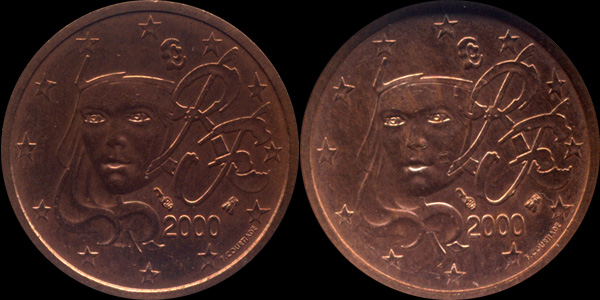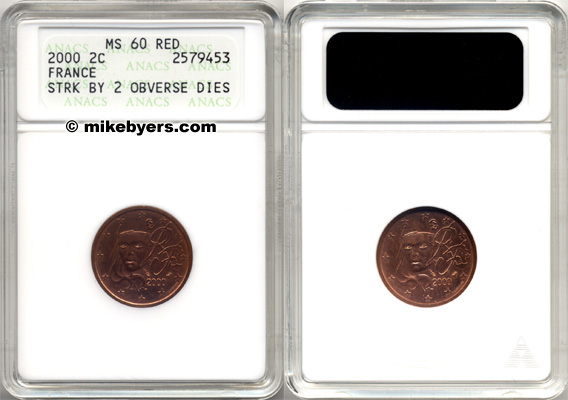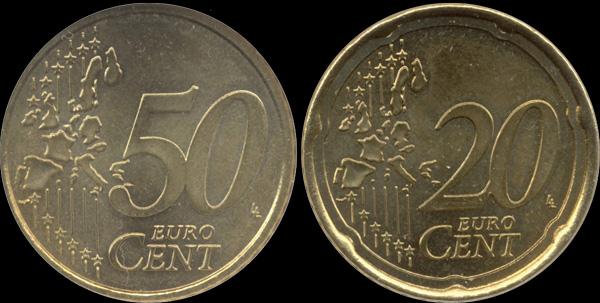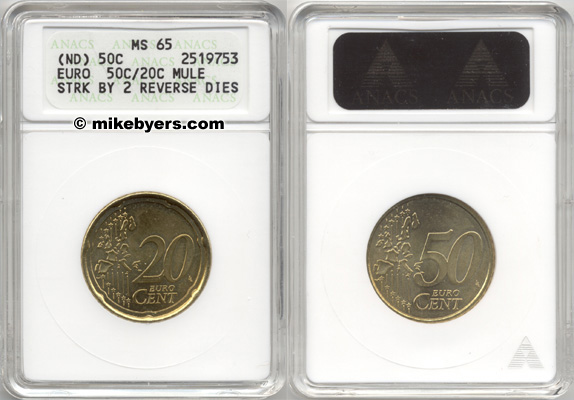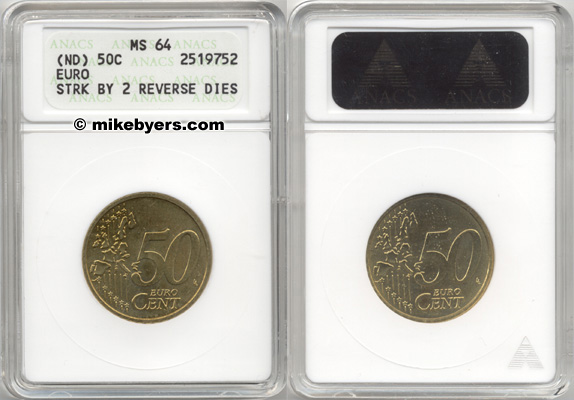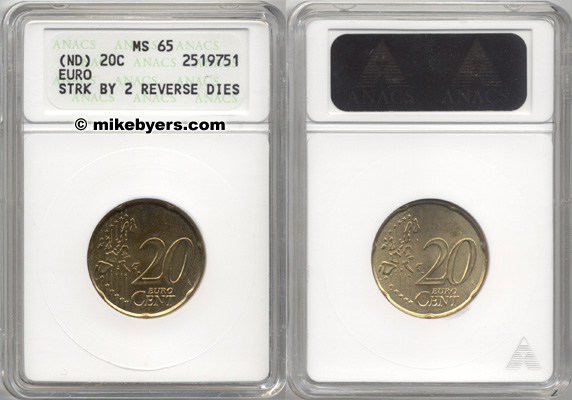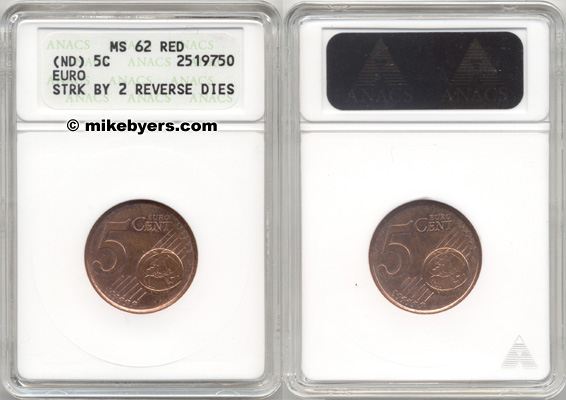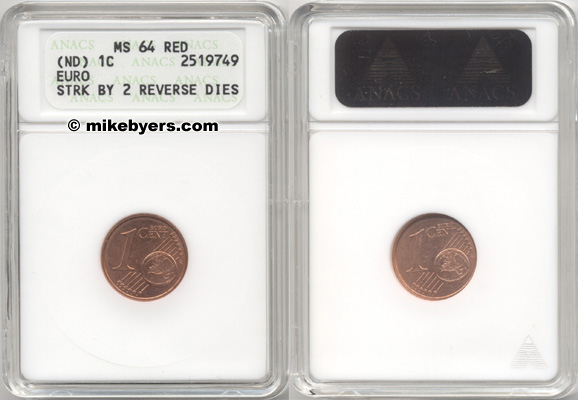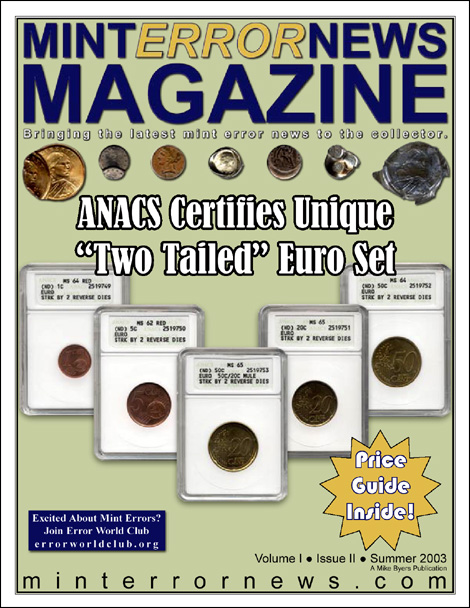Certified by ANACS
SOLD

This incredible "Two Headed & Two Tailed" Euro Set was just certified by ANACS. Mike Faraone, one of the graders and finalizers at ANACS, stated that "this is one of the most exciting mint error discoveries that I've examined and authenticated at ANACS. It is amazing that these new Euro coins were all struck by two reverse dies." The most exciting discovery is the unique 2000 France 2 Cent Euro struck by two obverse dies. It is the only known "Two Headed" Euro coin discovered from any of the countries in the European Monetary Union.
Since twelve member countries use the same reverse dies, it is impossible to determine the origin of these mint errors. This is one of the most dramatic and unique mint error discoveries in modern times.
On January 1, 2001 the Euro officially became the first common European Currency, replacing the individual National Currencies of the 12 Member Countries of the European Monetary Union. These countries are: Austria, Belgium, Finland, France, Germany, Greece, Ireland, Italy, Luxembourg, Netherlands, Portugal and Spain.
Every Euro Coin carries a common reverse design. Each of the 12 Member Countries strike the Euro with its own unique obverse design. Regardless of which Country is depicted on the obverse of a Euro Coin, it is accepted in any of the 12 Member Countries.
Euro Coins were minted starting in 1999. Not every country struck every denomination of Euro Coins in the first year. By the beginning of 2001 each country had a sufficient supply of Euro Coins on hand. Euro coins were then distributed and released into circulation.
There are approximately thirty genuine two-headed or two-tailed coins that have been authenticated by ANACS, PCGS or NGC. There are only four known "Two Tailed" U.S. coins: three Quarters and one Dime. One of the Quarters recently sold for $80,000.
